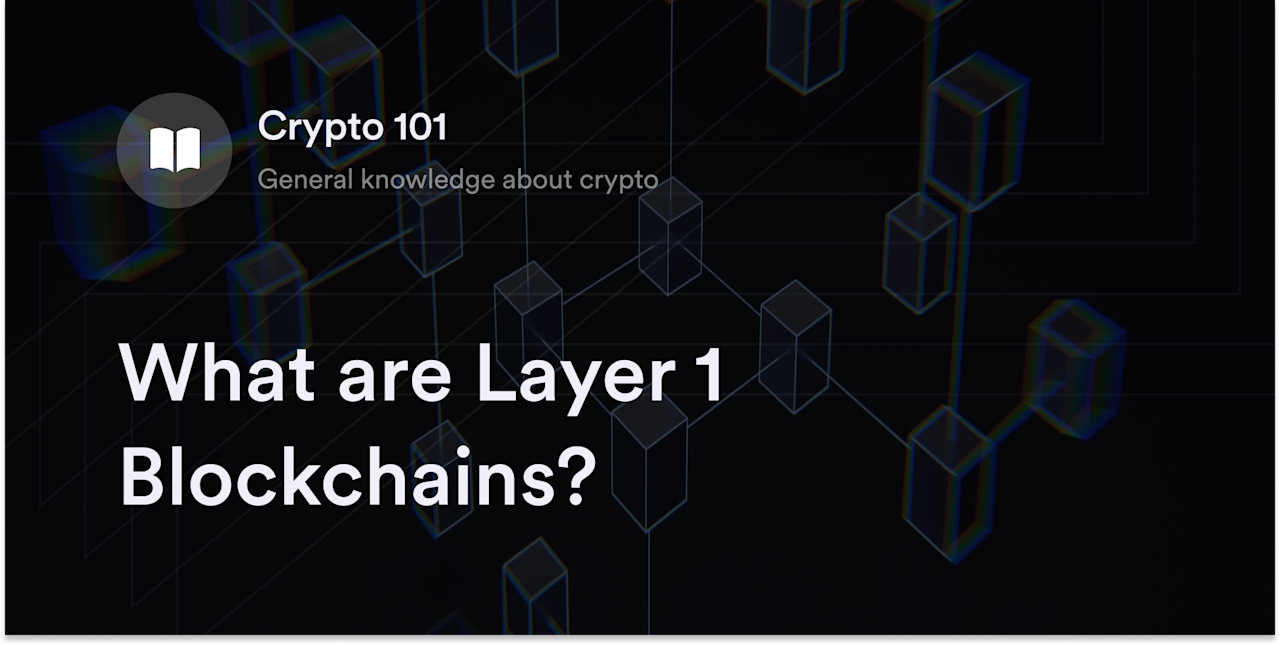


Cryptocurrencies may not be able to fall back on centralized bookkeepers, but that doesn’t mean they don’t have thorough and verifiable payment records. After all, without a transparent list of crypto transactions, there’d be no reason to trust a virtual currency’s network.
Cryptocurrencies like Bitcoin (BTC) work because they publish every transaction detail on a long list known as a distributed ledger. But it’s not just the cryptocurrency sector using distributed ledgers to secure and streamline their dataflows. Corporations like JP Morgan, Google, and Amazon are already exploring the potential benefits of sharing data with this groundbreaking technology. As more business leaders and governments learn about blockchains, distributed ledgers are set to reshape how the world thinks about transferring and storing online data.
Given the rapid adoption of distributed ledger technology within and outside the crypto sector, more people are curious about the pros and cons of this system. In this guide, we’ll explore what ledgers are in blockchains, how they work, and their implications for the future of data storage.
What is a Ledger in Blockchain?
A ledger is a list of transactions with details on how much money people send to specific accounts and when they transfer it. The major distinction between blockchain and non-blockchain ledgers is the former records the transfer of digital assets — typically cryptocurrencies — on decentralized computer networks. The computers (or “nodes”) on a blockchain network constantly broadcast and verify the latest transaction data for a virtual currency and publish this data on the transparent payment ledger. Each batch of payments on a blockchain forms one “block” in a linear sequence going back to the cryptocurrency’s first set of transactions (aka the genesis block).
Every blockchain uses unique algorithms to achieve consensus on its decentralized protocol, and anyone with access to a blockchain’s public ledger sees where every coin on the network traveled throughout its lifecycle.
What is Distributed Ledger Technology (DLT)? Explaining DLT vs. Blockchain
Distributed ledger technology (DLT) is the software architecture that makes recording, sharing, and verifying transaction data possible on peer-to-peer (P2P) networks. Although blockchains are a prominent example of DLT, not all DLTs are blockchains. Any network using a decentralized system of nodes to store and broadcast payment data fits the definition of a DLT.
Blockchain ledgers are a subset of DLT that share certain traits. Most significantly, blockchains must move in a linked (or “chained”) linear sequence of encrypted data blocks from the genesis block to the present day. Also, all blockchain ledgers are immutable, meaning changing data once posted on the network is impossible.
While many DLTs follow the blockchain model, developers have greater flexibility in structuring their security protocols, consensus algorithms, and dataflows. For example, directed acyclic graph (DAG) is a type of DLT similar to blockchain that doesn’t require nodes to wait for full block confirmation before processing new payments. Although nodes on DAGs typically cross-reference transaction data from prior datasets, they rely on distinct algorithms to arrive at consensus without rigid step-by-step block confirmations.
How do Distributed Ledgers Work in Cryptocurrency?
Cryptocurrencies work by spreading (or “distributing”) copies of the payment ledger to every participating node on the network. But it’s not enough for every node to hold a static list of transactions on their private computers — nodes also need a way to reliably communicate and approve new transfer data in real time. Although each blockchain has unique rules and processes, most rely on a combination of encryption technologies and consensus algorithms to manage their ledgers.
How do Consensus Algorithms Work in Blockchain?
A consensus algorithm is a protocol nodes follow to validate and post transactions on a blockchain. Think of these algorithms as the rulemakers and enforcers of decentralized ledgers. Although there are dozens of unique consensus mechanisms in cryptocurrency, two of the most common methods include proof-of-work (PoW) and proof-of-stake (PoS).
Proof-of-Work Consensus
Introduced on the Bitcoin blockchain, PoW is an energy-intensive consensus algorithm in which nodes compete to solve algorithmic problems and verify new transactions on a payment ledger.
Typically, the first computer to calculate one of these math puzzles gets cryptocurrency rewards in their wallet.
PoW is also known as “crypto mining” because the nodes on the network usually unlock (or “mine”) new cryptocurrency into circulation through a built-in reward mechanism. For example, every 10 minutes on the Bitcoin blockchain, miners receive BTC “block rewards” when they’re the first to solve the latest algorithmic puzzle. Although PoW isn’t the most eco-friendly consensus algorithm, it has the longest track record in cryptocurrency for efficiency and security.
Proof-of-Stake Consensus
On a PoS blockchain, nodes must lock (or “stake”) cryptocurrency on-chain to validate transactions and record them on a ledger. Like PoW blockchains, PoS chains reward validator nodes every time they successfully post a transaction, but PoS nodes don’t need to use computer power to solve advanced math equations. Instead, the algorithms on PoS blockchains select nodes in timed intervals to verify and submit transaction data. Often, the larger a node’s percentage of staked cryptocurrency, the greater the odds they’ll post transactions and receive rewards.
Public and Private Key Encryption
Blockchains also use encryption tools called “public keys” and “private keys” whenever users submit crypto transactions to a payment ledger. In a cryptocurrency wallet, the private key is similar to a “master password,” giving whoever knows it access to crypto funds. A public key, however, is similar to a bank account number, which is safe to share with others.
Through advanced cryptography, the public key links to a wallet’s private key, but not the other way around. Therefore, it’s safe for crypto traders to use their public keys whenever they want to receive virtual currencies, but they can’t share their private keys. To successfully submit a transfer to a blockchain’s ledger, crypto users must digitally “sign” every transaction with their private keys before broadcasting it on the network.
Permissionless vs. Permissioned Ledgers
The phrases “permissionless” and “permissioned” signify who has the right to become a validator node on a blockchain’s ledger.
On permissionless blockchains like Bitcoin or Ethereum (ETH), there are no background checks or special accreditations to run a node. As long as node operators abide by the protocol’s consensus algorithm for validating transactions, they’re free to participate in block validation.
By contrast, only pre-screened nodes are allowed onto permissioned blockchains. Even if someone meets the technical requirements of a permissioned blockchain’s algorithm, they can’t join the network without permission from a third-party entity.
Sometimes, corporations or governments use permissioned blockchains to take advantage of the benefits of decentralized digital ledgers while maintaining oversight and high security standards.
The Pros and Cons of DLT
DLT offers noteworthy benefits versus standard centralized data storage systems, but it also poses unique challenges for developers. Any programmers or corporations interested in using DLT systems must consider the opportunities and tradeoffs of integrating these ledgers into their data protocols.
Pros of DLT
No central point of failure: Since DLT protocols rely on networks of nodes rather than a centralized data server, they don’t have a vulnerable spot for hackers to attack. Plus, since every node has a full copy of the transaction history, malicious actors need more energy and expertise to break into a DLT and rewrite the payment data.
Efficient auditing procedures: The transparency of distributed ledgers makes it easy for network participants and outside observers to trace the history of virtual assets. Even when corporations use permissioned blockchains, DLT helps maintain impeccable and shareable records, which speeds up routine auditing processes.
Ease of accessibility: On permissionless protocols, an Internet connection is all that’s needed to view or contribute to a distributed ledger. DLT’s enhanced accessibility makes it easy for developers to offer their virtual services on a global scale.
Cons of DLT
Scalability concerns: Although DLT is a widely accessible system, developers can’t easily implement protocol changes as network activity rises. Coordinating software updates on decentralized networks takes longer than with a top-down corporate structure, and the rigidity of consensus algorithms sometimes hampers scalability efforts.
Lack of flexibility: DLTs rely on fixed protocols like consensus algorithms to arrive at an agreement and ensure the validity of the data nodes published. While these high encryption standards provide consistency and security, they make it more difficult for developers to introduce changes and adapt to changing circumstances. Even if developers have a proposed software solution for a blockchain, it takes a long time to submit a proposal and have nodes vote on it before putting it to the test.
Privacy concerns: The transparency of distributed ledgers is positive in terms of building network trust, but it also presents a problem for companies, governments, or individuals concerned about online privacy. Without ways to selectively anonymize personal details like patient information or unique IDs, DLTs aren’t suitable for some specialized use cases.
Eligible Traders can Experience Decentralized Perpetuals Trading on dYdX
dYdX takes full advantage of the security decentralized networks provide on our industry-leading crypto derivatives exchange. Using a hybrid on-chain and off-chain order book model, dYdX taps into deep market liquidity for perpetual contracts while preserving complete decentralization. To learn more about how dYdX works and our latest feature upgrades, follow our official blog for up-to-date news. Also, check out dYdX Academy for more expert guides on groundbreaking crypto technologies and Web3 applications, and eligible traders can start trading on dYdX today.
Disclaimer
The content of this article (the “Article”) is provided for general informational purposes only. Reference to any specific strategy, technique, product, service, or entity does not constitute an endorsement or recommendation by dYdX Trading Inc., or any affiliate, agent, or representative thereof (“dYdX”). Use of strategies, techniques, products or services referenced in this Article may involve material risks, including the risk of financial losses arising from the volatility, operational loss, or nonconsensual liquidation of digital assets. The content of this Article does not constitute, and should not be considered, construed, or relied upon as, financial advice, legal advice, tax advice, investment advice, or advice of any other nature; and the content of this Article is not an offer, solicitation or call to action to make any investment, or purchase any crypto asset, of any kind. dYdX makes no representation, assurance or guarantee as to the accuracy, completeness, timeliness, suitability, or validity of any information in this Article or any third-party website that may be linked to it. You are solely responsible for conducting independent research, performing due diligence, and/or seeking advice from a professional advisor prior to taking any financial, tax, legal, or investment action.
You may only use the dYdX Services in compliance with the dYdX Terms of Use available here, including the geographic restrictions therein.
Any applicable sponsorship in connection with this Article will be disclosed, and any reference to a sponsor in this Article is for disclosure purposes, or informational in nature, and in any event is not a call to action to make an investment, acquire a service or product, or purchase crypto assets. This Article does not offer the purchase or sale of any financial instruments or related services.
By accessing this Article and taking any action in connection with the information contained in this Article, you agree that dYdX is not responsible, directly or indirectly, for any errors, omissions, or delays related to this Article, or any damage, injury, or loss incurred in connection with use of or reliance on the content of this Article, including any specific strategy, technique, product, service, or entity that may be referenced in the Article.







